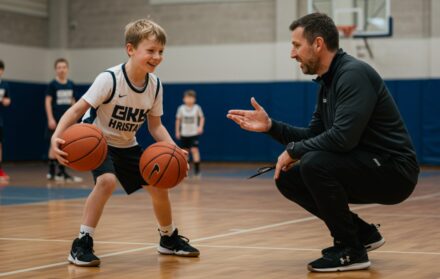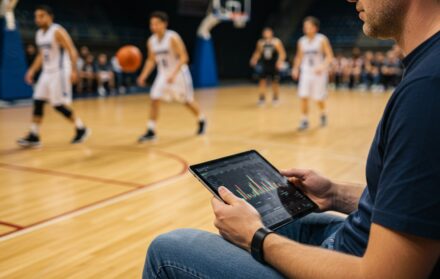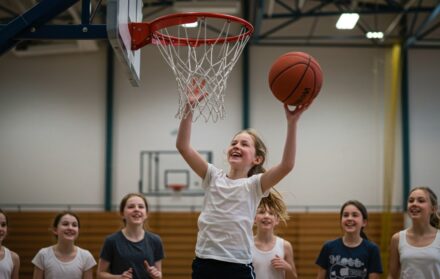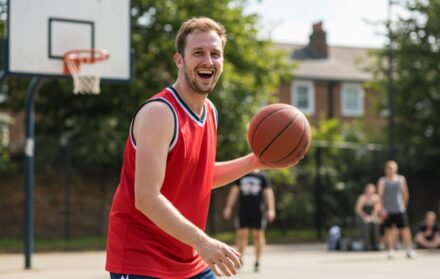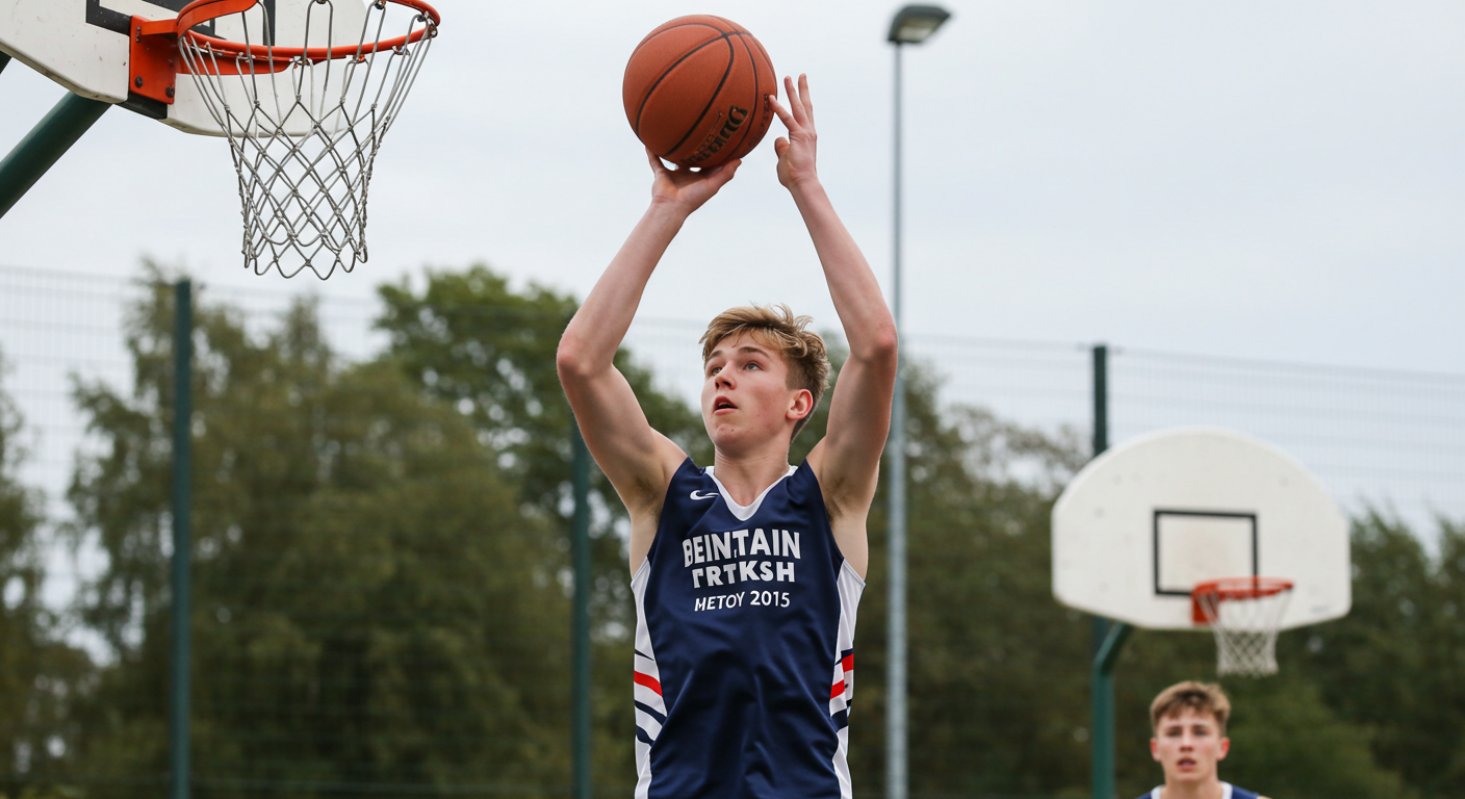
How long does it take to get good at basketball?
When someone first picks up a basketball, one of the most common questions is How long does it take to get good at basketball. The answer depends on how you define the word “good” and on how much effort you are willing to commit. Improvement can be measured within weeks or months, but consistent skill that holds up under pressure usually requires years of training.
Research into motor learning describes three stages of skill acquisition: the cognitive stage, the associative stage, and the autonomous stage. Most players can move through the first two stages relatively quickly, but reaching the autonomous stage, where movements flow without conscious effort, often requires several years of consistent practice.
In this article, we will outline realistic timelines, the factors that influence progress, and practical steps you can take to accelerate your development. You will see that basketball improvement is not linear, but with a plan, you can track progress and move steadily from beginner to advanced player.
What “good” actually means in basketball
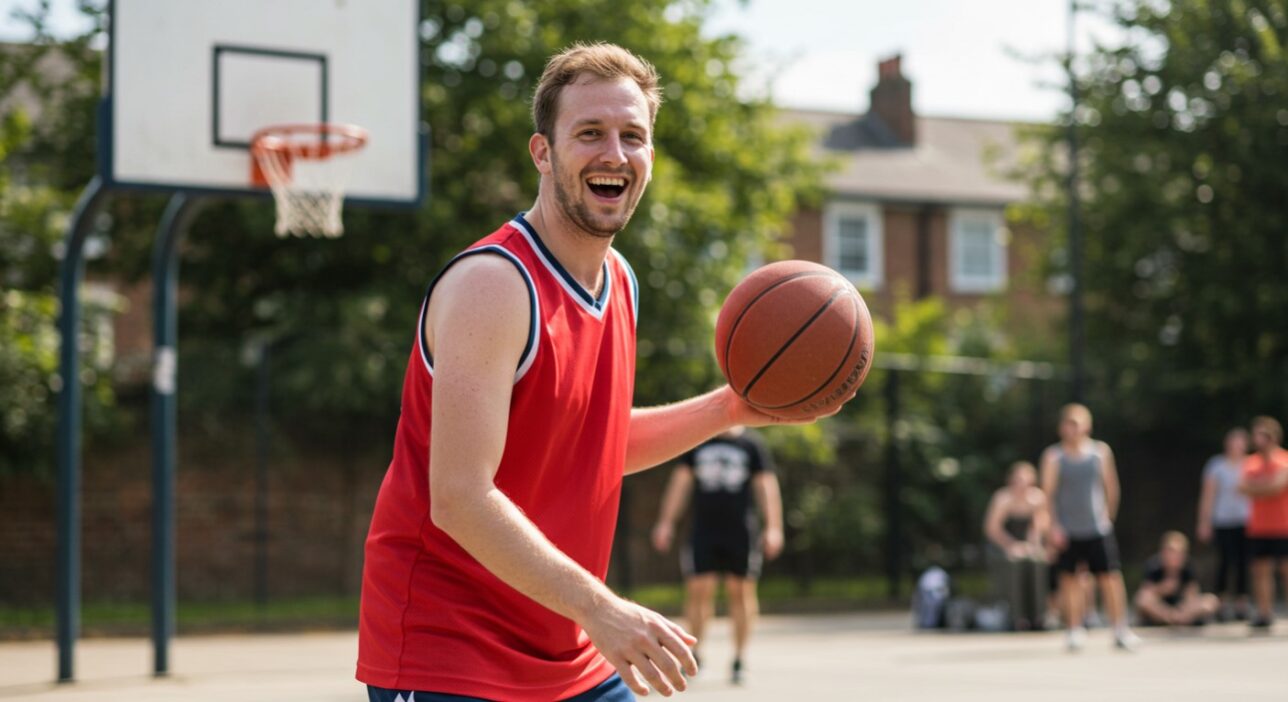
Before discussing timelines, it is important to define what being good actually means. A recreational player might define it as being competent enough to join a pick-up game at the local court and contribute without being a liability. At the school or club level, being good may mean starting games, scoring regularly, and defending effectively. At an advanced competitive level, good refers to being consistent across multiple skill areas, handling pressure situations, and contributing to a team’s success in structured leagues.
Objective benchmarks can help place yourself along this spectrum. A recreationally competent player should be able to make at least 50 out of 100 open mid-range shots, dribble confidently with both hands under time pressure, and execute basic passes with accuracy. A school-level starter might aim for 65 out of 100 open shots, low turnover rates, and the ability to defend effectively in man-to-man situations. An advanced player should combine efficiency with decision-making, showing strong percentages under pressure, tactical awareness, and the ability to anticipate opponents.
Coaches and researchers often use checklists to evaluate skills such as dribbling control, passing accuracy, and defensive footwork. These provide structured ways to assess whether a player has reached competence or is still in development.
What research says about how fast skills develop
Skill development in basketball, as in other sports, is non-linear. Longitudinal studies of youth players show that athletes often experience bursts of improvement followed by periods of plateau. For example, dribbling and passing accuracy may suddenly jump after several months of practice, but then stabilise until a new training stimulus is introduced.
Sports science also shows that agility and reaction training have a measurable effect on basketball skills. Controlled studies have linked agility ladder work, cone drills, and reaction-time exercises to better dribbling and change-of-direction ability. Core strength and general athletic training also support faster skill acquisition by improving balance, power, and coordination. However, sport-specific practice remains the strongest driver of improvement. Strength alone does not guarantee better shooting or ball handling, but when combined with skill practice, it accelerates development.
The main lesson from research is that progress happens in steps rather than in a straight upward line. Players should expect temporary plateaus and treat them as part of the learning curve rather than as failure.
Typical timeframes, with caveats
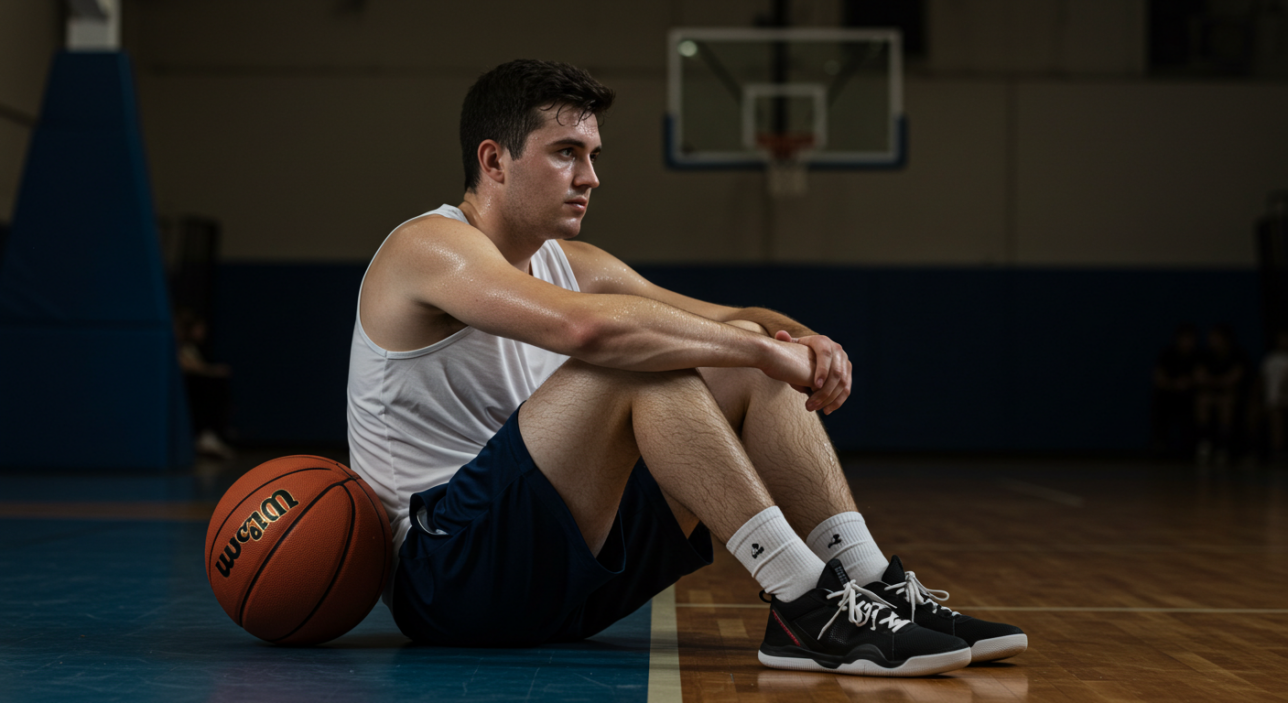
For a complete beginner, early competence often develops within two to three months of structured practice. At this stage, players usually gain control over basic dribbling, footwork, and layups. These improvements occur quickly when practice is frequent and feedback is available, since motor skills respond rapidly to early repetition.
To reach competitive readiness, such as being a reliable recreational or school-level player, six to twelve months is a realistic estimate. This assumes practice at least three times per week and regular exposure to games. During this stage, progress will be inconsistent. Some weeks will bring obvious improvement, while others may feel stagnant.
Advanced play, where a player performs well under pressure and demonstrates near-automatic skills, generally takes several seasons. This stage reflects the transition to the autonomous phase of motor learning, where decision-making and execution happen fluidly during games.
Timelines vary widely by individual. A multi-sport athlete might progress faster because of transferable coordination, while someone with less athletic background may require more time.
Factors that speed up or slow down your progress
Several factors influence how quickly someone becomes good at basketball.
Practice quality matters more than sheer quantity. Research on deliberate practice highlights the importance of focused sessions with feedback rather than random repetition. For example, shooting 200 jump shots without feedback is less effective than 50 shots where form is corrected after each attempt.
Training frequency and recovery also play a role. Practising two to five days per week is common for developing players, but recovery is necessary to avoid overuse injuries and burnout. A mix of on-court sessions and strength or conditioning work provides balance.
Coaching and feedback accelerate development significantly. Video review and notational feedback allow players to see mistakes they may not feel in real time.
Physical qualities such as agility, acceleration, and vertical power support skill expression. A player with quick feet will defend more effectively, while strong legs provide consistency in shooting form.
Game exposure is vital. Practising alone helps refine technique, but decision-making under pressure develops only through real matches. Game repetitions teach players when to shoot, pass, or drive, and no amount of solo practice can fully replicate this.
A 12-week accelerator plan to get good faster

For beginners or intermediates who want to improve rapidly, a structured 12-week programme can provide focus.
Weeks 1–4: Fundamentals block
Work daily on form shooting close to the basket. Practise stationary dribble drills, then progress to moving dribbles with both hands. Focus on defensive stance and closeout drills for footwork. Include finishing drills such as layups from each side. Add two short strength sessions focusing on bodyweight movements and core stability.
Weeks 5–8: Adding decision-making
Introduce small-sided games to encourage reads on defence and offence. Add passing on the move and reaction-based agility drills. Research shows these improve reaction time and dribbling control. Begin to integrate pick-and-roll reads in controlled drills. Maintain strength sessions and add plyometric work.
Weeks 9–12: Pressure and transfer
Play live scrimmages with constraints such as limited dribbles or timed possessions to simulate pressure. Track shooting accuracy under time limits. Practise full-speed drills like transition offence and defensive rotations. Conditioning sessions should finish practice to build stamina. Maintain two strength sessions per week and add mobility work.
By the end of twelve weeks, players who train consistently will notice clear improvements in shooting, dribbling, and confidence under pressure.
How to track progress and adjust when you plateau
Tracking measurable progress prevents frustration and helps adjust training. Set monthly benchmarks such as a 100-shot chart from set spots, timed dribble obstacle runs with each hand, and defensive agility tests. Track turnovers during scrimmages to evaluate decision-making.
Video analysis is another key tool. Record two drills weekly and compare footage to the previous month. Look for improvements in shooting mechanics, dribbling fluidity, or defensive stance.
When plateaus occur, add variation. For example, change the speed of drills, introduce defenders, or alter court size in small-sided games. Goal setting with interim targets maintains motivation and provides a sense of achievement.
Sample timelines by starting point

For a true beginner with a sports background, expect three months to reach competence in ball control and layups, and nine to twelve months to become reliable in recreational games. This assumes four to five focused sessions per week.
A multi-sport athlete new to basketball often progresses faster because coordination, agility, and reaction skills transfer from other sports. Early gains in dribbling and defence may arrive within weeks, though advanced basketball-specific skills still require seasons of practice.
A youth athlete on a school team may need one to two full seasons to transition from bench contributor to starter. This aligns with longitudinal data on youth skill development, where progress follows cycles of plateau and sudden leaps forward.
Common mistakes that delay getting good
Many players make errors that slow progress. Skipping fundamentals to attempt advanced moves undermines long-term skill. For example, focusing on trick dribbles before mastering stationary control leads to inconsistency.
Neglecting recovery is another mistake. Overtraining without a plan for rest can cause injury or fatigue, both of which halt improvement.
Practising alone is also limiting. Without feedback or game exposure, players miss opportunities to develop decision-making and pressure handling.
Finally, some players spread themselves too thin, chasing every move or position rather than focusing on incremental mastery. Clarity in goals accelerates improvement.
FAQs: How long does it take to get good at basketball?

Can I get good in under a year?
With structured practice and regular games, many players reach a solid recreational level within six to twelve months. However, mastery of advanced skills typically takes several years.
How many hours per week should I practise?
Quality matters more than hours. A combination of three to five on-court sessions plus two strength sessions weekly is an effective baseline.
What matters more, practice hours or talent?
Both contribute. Natural coordination and athleticism help, but deliberate, specific practice explains much of long-term improvement.
Conclusion: Your timeline to get good at basketball

Basketball rewards consistent effort and structured practice. Expect noticeable progress in a few months, stable competitive skill within one or two seasons, and near-automatic ability after years of repetition. Improvement is never a straight path, but players who focus on fundamentals, incorporate agility and reaction training, and gain real game exposure will progress faster.
The realistic answer to how long it takes to get good at basketball is that you can reach recreational competence within months, reliable competitive ability within a year, and advanced skill after several seasons. The journey is demanding but highly rewarding, and each stage brings its own satisfaction.

